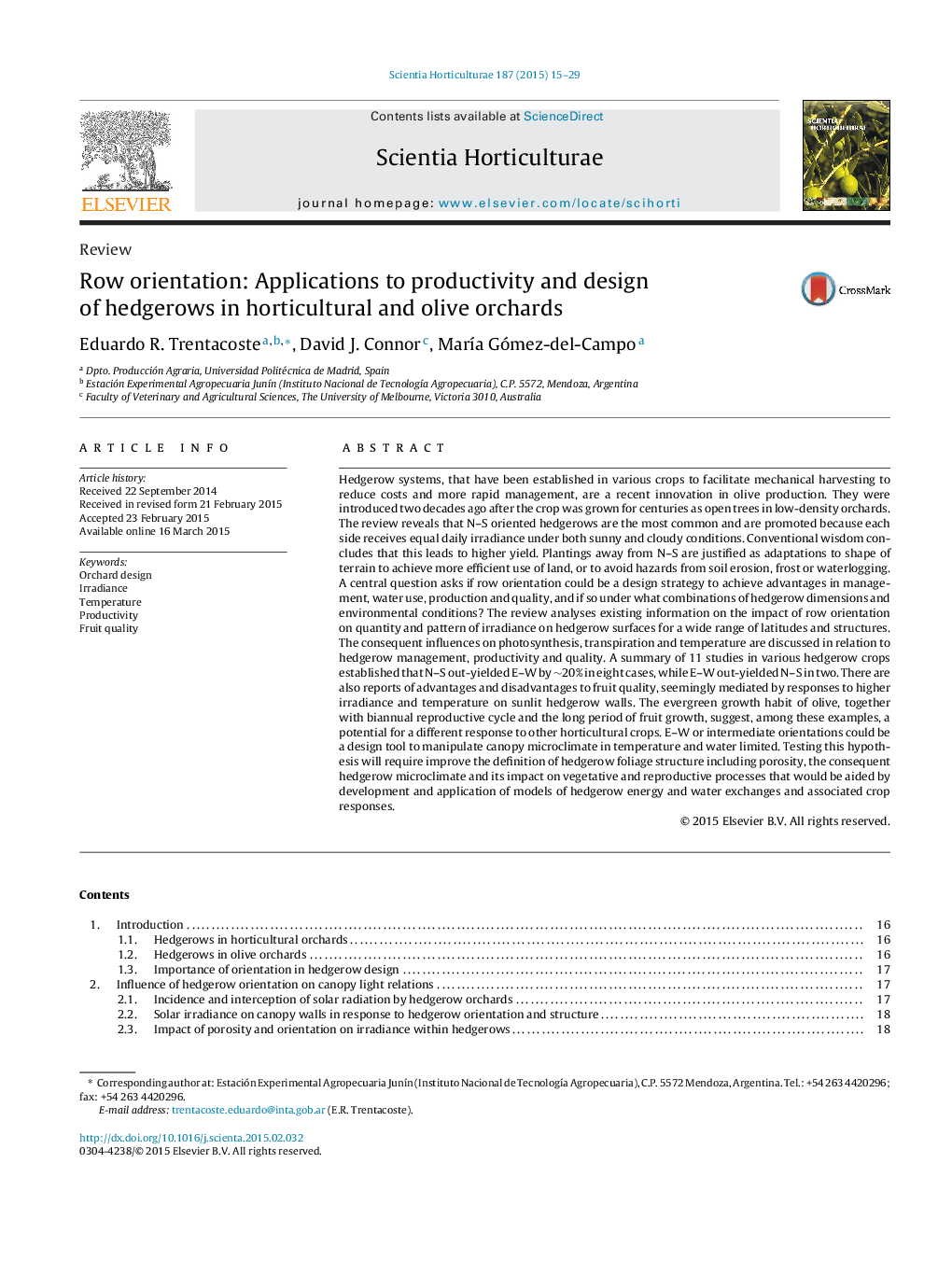| کد مقاله | کد نشریه | سال انتشار | مقاله انگلیسی | نسخه تمام متن |
|---|---|---|---|---|
| 4566357 | 1628811 | 2015 | 15 صفحه PDF | دانلود رایگان |
• Tests the hypothesis that N–S presents advantage respect to other orientations.
• Presents simulations of effects of orientations, porosity and latitude on irradiance.
• Examines effects of orientation on physiology, productivity, yield and quality.
• Provides guidelines for effective experimental comparisons of hedgerow orientation.
Hedgerow systems, that have been established in various crops to facilitate mechanical harvesting to reduce costs and more rapid management, are a recent innovation in olive production. They were introduced two decades ago after the crop was grown for centuries as open trees in low-density orchards. The review reveals that N–S oriented hedgerows are the most common and are promoted because each side receives equal daily irradiance under both sunny and cloudy conditions. Conventional wisdom concludes that this leads to higher yield. Plantings away from N–S are justified as adaptations to shape of terrain to achieve more efficient use of land, or to avoid hazards from soil erosion, frost or waterlogging. A central question asks if row orientation could be a design strategy to achieve advantages in management, water use, production and quality, and if so under what combinations of hedgerow dimensions and environmental conditions? The review analyses existing information on the impact of row orientation on quantity and pattern of irradiance on hedgerow surfaces for a wide range of latitudes and structures. The consequent influences on photosynthesis, transpiration and temperature are discussed in relation to hedgerow management, productivity and quality. A summary of 11 studies in various hedgerow crops established that N–S out-yielded E–W by ∼20% in eight cases, while E–W out-yielded N–S in two. There are also reports of advantages and disadvantages to fruit quality, seemingly mediated by responses to higher irradiance and temperature on sunlit hedgerow walls. The evergreen growth habit of olive, together with biannual reproductive cycle and the long period of fruit growth, suggest, among these examples, a potential for a different response to other horticultural crops. E–W or intermediate orientations could be a design tool to manipulate canopy microclimate in temperature and water limited. Testing this hypothesis will require improve the definition of hedgerow foliage structure including porosity, the consequent hedgerow microclimate and its impact on vegetative and reproductive processes that would be aided by development and application of models of hedgerow energy and water exchanges and associated crop responses.
Journal: Scientia Horticulturae - Volume 187, 13 May 2015, Pages 15–29
